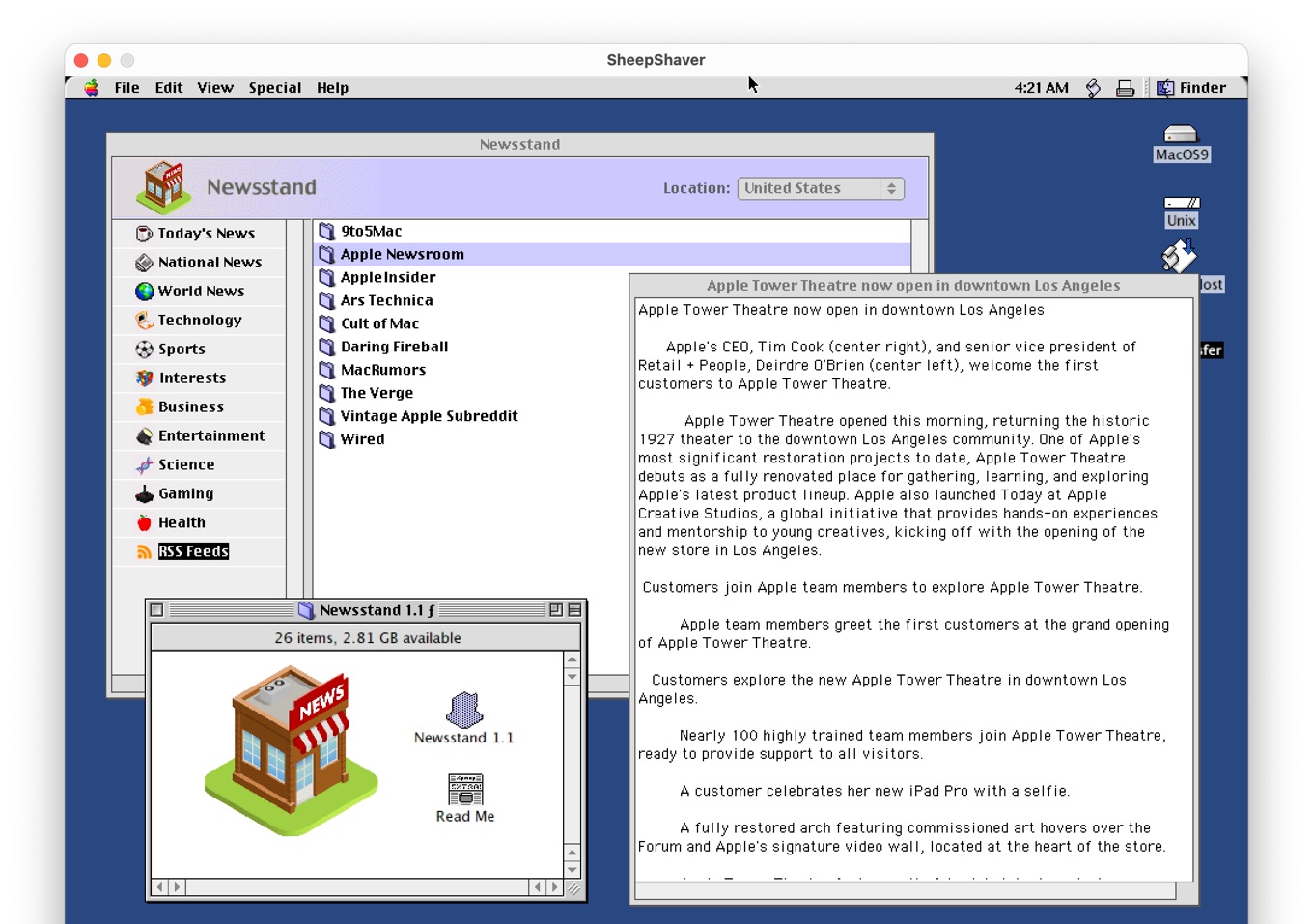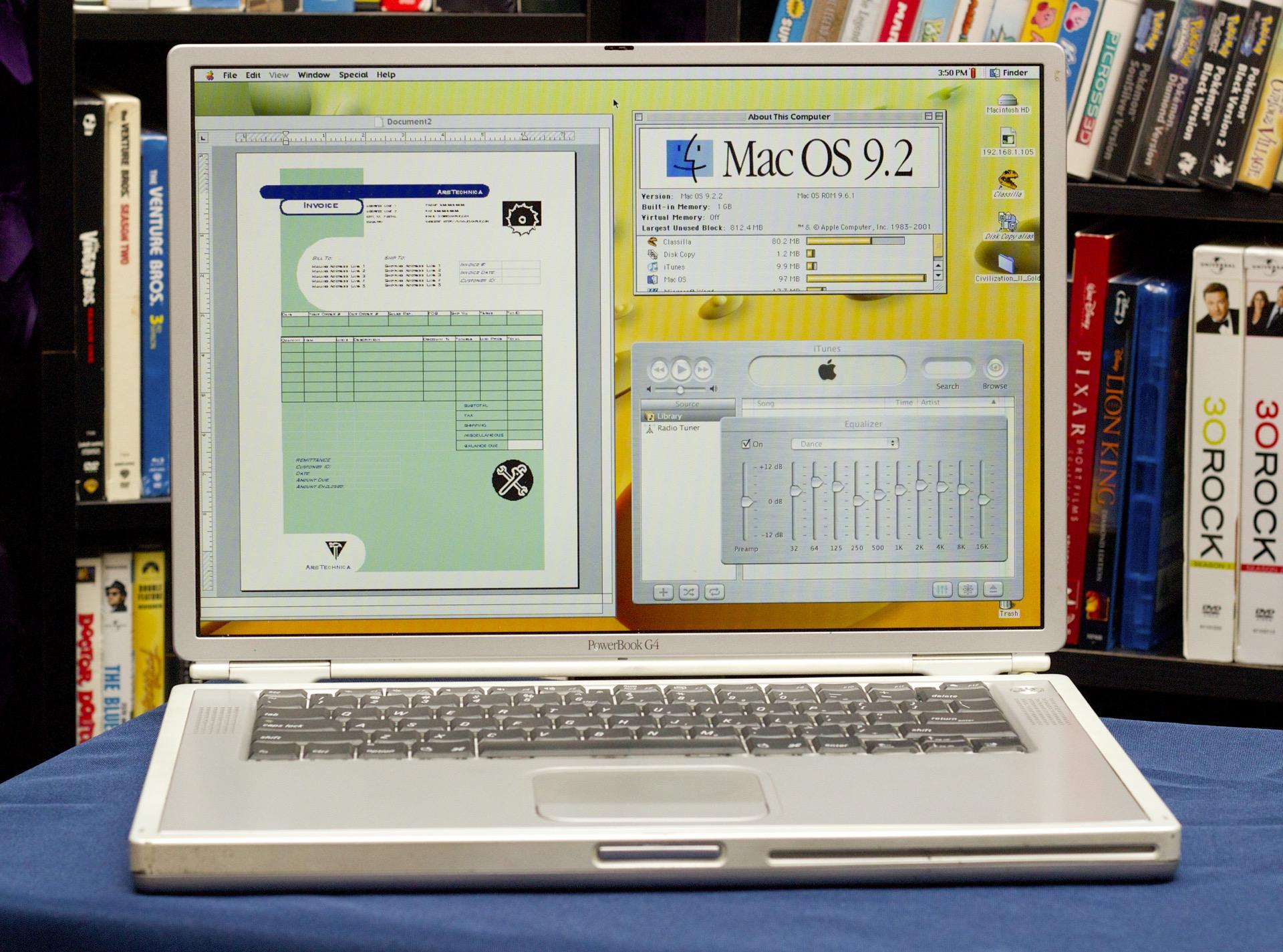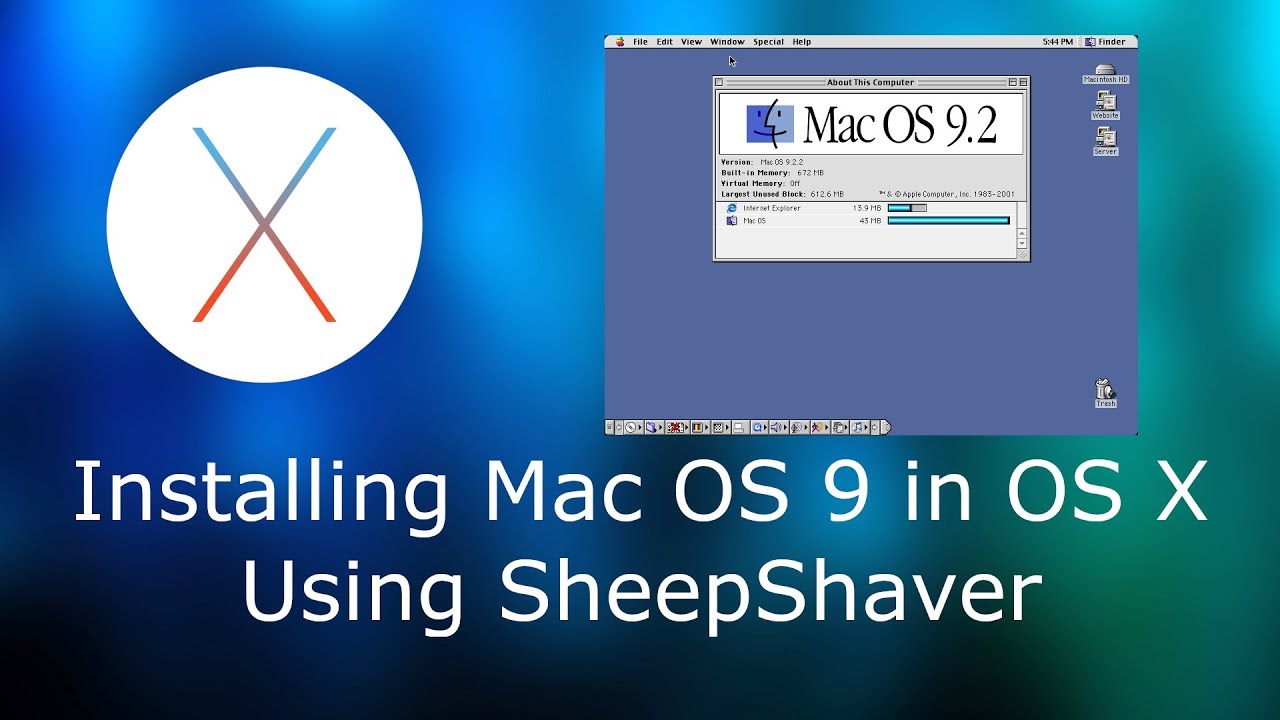
To this day both emulators share substantial amounts of code. SheepShaver led to Basilisk II, which is a 68K Macintosh emulator, before itself becoming open source. The ability of SheepShaver to run Mac apps directly on the processor accounts for some of its unusual design decisions that persist even on non-PowerPC architectures either running applications through its JIT compiler (on x86 and x86_64) or with an interpreter (everything else, including aarch64 and Apple silicon). SheepShaver works on Mac OS X, too, allowing Power Macs with Leopard to run classic apps at near native speeds, though not as well integrated as the Classic Environment, of course. It achieved surprisingly good speed on modest hardware by heavily patching the operating system (more later) and running most programs as native code directly on the BeBox's twin 603 CPUs, not unlike KVM-PR, though without using any special processor features (instead, this was achieved by patching out supervisor portions of the emulated Mac ROM and running all components, including the nanokernel, in the problem state - today we would call this paravirtualization). SheepShaver started on BeOS and the PowerPC-based BeBox as a commercial product and pun on the Amiga 68K Mac emulator ShapeShifter it only runs the classic Mac OS, and only then up to 9.0.4 (later versions require an MMU, which SheepShaver doesn't implement). This is relevant because of the current state of Mac emulation: in general, the classic Mac OS is better supported than Mac OS X. Even my G5 only ever ran Mac OS X Tiger so that I still could run Classic applications (on top of the fact I preferred Tiger's interface to Leopard). With the exception of the G5 all of these systems natively ran the classic Mac OS, so I had a large investment in classic Mac software. I upgraded from there to (briefly) a used Power Mac 7200, then traded it in for a used Power Mac 7300, then pimped that out, then a Power Mac G4 MDD, the first computer I personally bought new, and then the G5.

I first touched a Mac in 1987 (it was my buddy's father's Mac Plus, and we spent hours messing around in HyperCard and System 6), though the first Mac I personally owned was a second-hand Macintosh IIsi. I certainly was, even granting it made commercial sense at the time, and I ended up using a Power Mac G5 Quad for 13 years as a daily driver before I got the Raptor Talos II I use now.

your macOS username) and then to the folder you placed your Hypercard stack (in the first step).Ĭopy your Hypercard stack from the 'Unix' disk to somewhere on the OS 9 'Macintosh HD' disk.ĭouble-click the Hypercard stack in the location you placed it on the OS 9 'Macintosh HD' disk (or open it from within Hypercard).I've always maintained (possibly by personal experience) that one of the natural future markets for OpenPOWER is one of the architecture's past markets: Power Mac users, particularly those who were irked by the Intel transition. Opening it is equivalent to opening your OS X /Users/ directory.įrom there, navigate to your user folder (eg. This is a virtual disk which actually lets you access files on your computer (eg. On the Mac OS 9 desktop there should be a disk called "Unix". If it doesn't work (Sheepshaver immediately quits) you can try dragging and dropping hypercard.sheepvm onto the Sheepshaver app. This should open a window containing Mac OS 9, which will boot up.


It contains an app called Sheepshaver, and a file called hypercard.sheepvm. Documents, or Desktop.ĭownload this zip file containing the SheepShaver classic Mac emulator bundled with Mac OS 9 and Hypercard.Įxtract the zip file. Place the Hypercard stack you want to access somewhere within your user folder: eg. Here is a pretty easy guide to running a Hypercard stack on a recent Mac: A bunch of people have emailed me about getting Hypercard stacks running under emulation.


 0 kommentar(er)
0 kommentar(er)
